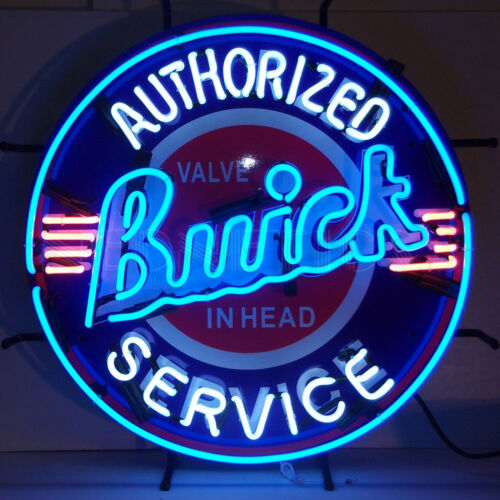LED vs Neon Signs | Which Is The Best One To Use?
Which should customers select between LED vs Neon Signs? In this post, Orant Neon will explore the difference between neon and LED sign, as well as why neon is becoming increasingly popular for companies of all kinds.
>>> Explore more: How Neon Lights Are Made| 3 Important Phase
1. What is the difference between LED and neon lights?
| Benefits | LED Sign | Neon | Winner |
| Affordability |
The price is about 10% cheaper than neon | Higher price but custom made LED Sign |
LED Sign |
| Energy Efficiency |
24 volts | 15,000 volts | LED Sign |
| Safety | LED lights are safe to use that do not generate great heat and do not contain harmful substances such as mercury and phosphorus | Neon is made from glass tubes, so it will likely break if dropped | LED Sign |
| Accessibility | Color is not varied | Various colors, can be chosen to match many different styles | Neon |
| Brightness | Soft light, less attractive | Bright light, outstanding even when viewed from a distance | Neon |
These are the difference between neon vs LED that you need to be aware of:
1.1 Price
LED signs are less expensive, despite the fact that the beginning expenses of neon and LED lights are nearly comparable. Yet, depending on the size and style you choose, both neon and LED prices might vary. It all depends on how much light you want to utilize when comparing the price of LED and neon.
As demonstrated, the price difference between neon signs vs LED is substantial. LED is around 10% more affordable than neon light for big outdoor installations. Yet, it would be beneficial if you thought about how valuable the cost reductions are.

1.2 Power Usage
Custom neon signs still use more voltage than LED signs, despite recent reductions in power consumption. As a consequence, LED lights use less secondary power than neon lights, making them the most energy-efficient lighting or signage option.
Whereas large neon displays can require up to 15,000 volts to run, LEDs only need 24 volts. So if you're thinking about putting on a big outdoor event and are tossing between LED and neon, LEDs may end up saving you a lot of money in the long run.
For a business sign or small light show, the real cost of operating neon and LED lighting is comparable. Hence, there isn't much of a distinction between the two. It's also important to remember that amperage, which is used to measure energy efficiency, is less than 1 amp for a typical neon.
>>> Refer: Neon Light Voltage - Everything You Need To Know
1.3 Maintenance
LED signage provides much lower running costs and practically no maintenance requirements. Neon, however, are more difficult to maintain, particularly in colder locations where ice and snow are a problem. Also, maintenance issues need to be attended to by a qualified professional, which might increase the cost.

Neon signs will require more upkeep, but LED signs won't
1.4 Safety
Since genuine glass tubing and high voltage are used in neon, there is always a chance that they will break and require particular disposal methods. Yet, LEDs are completely safe to use because they don't get hot and are shockproof. Moreover, hazardous substances like mercury and phosphor are not present in LED signs.
>>> Refer: Do Neon Lights Get Hot? Is It Dangerous?
1.5 Brightness
In contrast to neon lights, LED signs provide a cooler and less attractive light. Neon, on the other hand, are brighter and can be seen from a greater distance.

Neon provide warmer and less appealing light than LED signage
1.6 Accessibility
Neon come in a range of colors and may be made in a number of different ways. They can operate around the clock and are trustworthy, which can benefit your business.
1.7 Curb Appeal
Neon have remained so popular with businesses all around the world because of the warm, welcoming light they generate. Old-fashioned glamour and magnificence are evoked just by the neon light. LED lights, on the other hand, are dazzling, yet they might look cold, rigid, and harsh to the eyes.
>>> Refer: Neon Sign Not Working: How To Repair & Maintenance
2. Neon vs LED - Which should you choose?
Determining the purpose of each is essential when deciding between neon and LED signage. If your company has a vintage aesthetic and you want distinctive signage but aren't concerned about the cost, neon are a great solution. The greatest choice, however, if you want your signage to be outside and have a neon look without the exorbitant expense, is bespoke neon.
Should choose LED vs neon signs? It is a significant choice the kind of sign you desire. If you're experiencing trouble, contact Orant Neon because we have skilled installers and designers for company signs. Designing a new sign for your company will be a snap because of our knowledge, state-of-the-art tools, and years of experience.

Nowadays, it might be difficult to decide between neon vs LED sign
3. Learn about neon
Neon signs have been around for a long time, but they are making a return in today's world. Please read through the content below to find out more about neon.
3.1 What are neon made of?
The following are the primary elements of a neon:
Tubes: These are hand-heated, bent, and twisted soft lead glass (crystal) objects that are subsequently cooled and fused. Afterward, different gases are injected into them to produce varied colors.
The tubes are shaped by being bent
>>> Refer: Gases Used In Neon Signs: All Important Information

Both of the tube's ends are welded with enclosed pure-iron electrodes
Transformer: The device uses electricity to transmit the voltage required to light the neon gas within fluorescent tubes from the mains to the electrodes. They function using a mechanism called electromagnetic induction.

The electromagnetic induction process powers neon
>>> Refer: Neon Sign Transformer - Important Information To Know
The glass tubes are fixed to a backdrop panel or supported by some sort of structure once the final pattern has been created.
While bigger displays are often supported by wood, steel, or aluminum, smaller signs typically use a steel foundation.

Neon are usually fixed with a steel base
3.2 How neon lights work?
The chemical interaction between the gas within the glass tube and the energy injected via the metal electrodes causes neon to generate light.
These signs are made of neon gas-filled glass tubes that have been molded into lettering or artistic patterns. The neon tubing illuminates when a high-voltage electrical current is sent through the gas.

The neon tube glows is passed through the gas
>>> Explore more: How To Make A Neon Sign With 6 Easy Steps
4. Learn about LED signs
LED signs are becoming increasingly popular owing to their energy efficiency, extended life, and bright colors. The information below will show you more about LED signage.
4.1 What are LED signs made of?
Neon and other LED neon (faux-neon) signage don't require glass or neon gas. Instead, they are constructed of acrylic, a thermoplastic also known as Perspex or Altuglas that is lightweight, impact-resistant, and good at transmitting light.

Acrylic is used to make LED signage
The following are the primary elements of a typical LED sign:
- Tubes: These hollow tubes hold the LEDs and are made from solid blocks of opal acrylic that have been cut, rounded, and sanded.
- Edges: Blockout paint or vinyl edging is applied to the acrylic tubes to complete the pattern.
- LEDs: LEDs (light-emitting diodes) are generally composed of aluminum-gallium-arsenide and function as semiconductors. They are linked together after being inserted close to one another within the acrylic tube.
- Backing panel: The tubes are affixed on a backing panel made of several materials, including polycarbonate, acrylic, and steel if it is essential for the final design.

The tubes are attached to a backing panel
4.2 How LED signs work?
Whereas neon relies on a reaction between neon gas and electricity, LED neon relies on electrons passing through a semiconductor, which is commonly made of aluminum-gallium-arsenide.
When used in signs, the LEDs must be placed inside the tubes in the correct position. Too many LEDs in the same space will draw more electrical power and possibly cause hot spots (when the light gets intense and looks like a dotted pattern). There will be black patches if there are too few LEDs placed incorrectly.
The LEDs must be placed to provide a constant source of light that resembles neon gas shining inside of a glass tube.

Constant light will be produced using LED signage
Related more:
The distinction between neon vs LED sign is described above by Orant Neon. Readers will have a comprehensive understanding of the differences between led and neon lights after reading this article.


